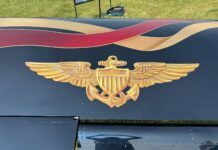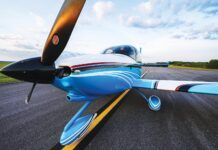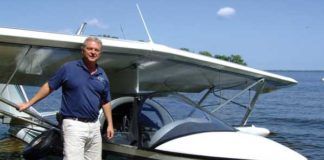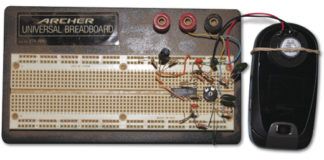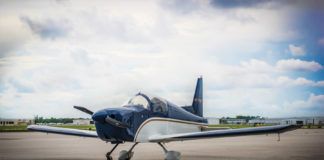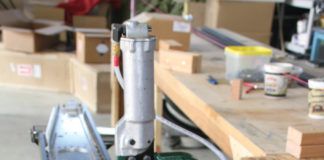It’s not uncommon: You paint a panel of some kind for your aircraft and then, later on, you have to mount the panel with a rivet. But now the rivet is unpainted and doesn’t look finished. Because you have just installed the panel in your cockpit, you can’t pull out the spray gun (or can) to touch it up. The mess you make would be worse than leaving the rivet unpainted. So what do you do?
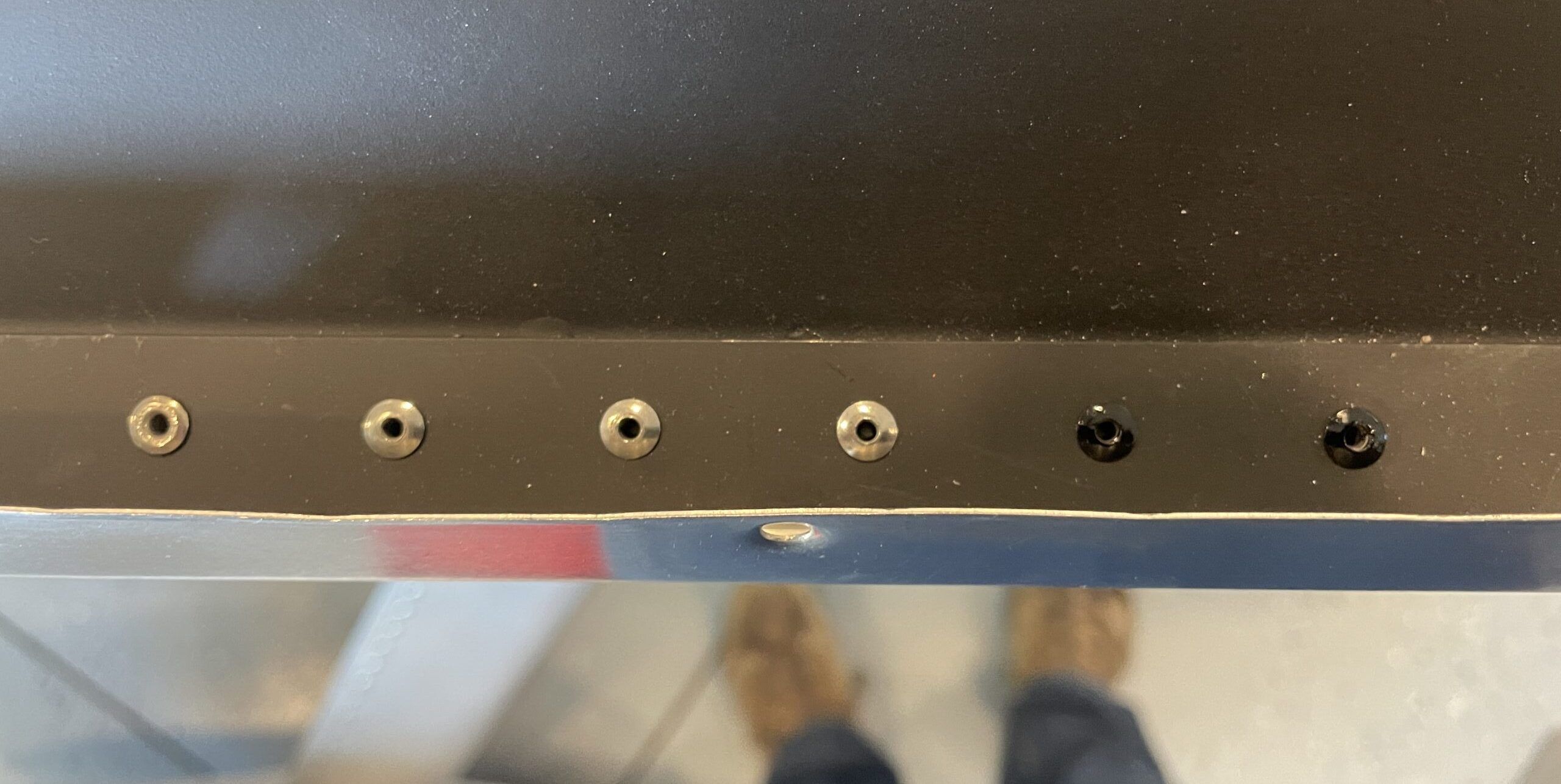
The answer is simple. Reach into your scrap bin and pull out a sliver of the thinnest aluminum you have. Drill a hole in it the size of your rivet head (if it’s a typical 1/8-inch pulled rivet, I bet a 1/4-inch hole will be the right size to fit over the head) and cut/grind away excess material to make a little paint mask. Put a little bend in it to make it easy to handle. Place the mask over the rivet head and paint with a small brush or a paint marker. If this is a line of rivets, move on to the next one.
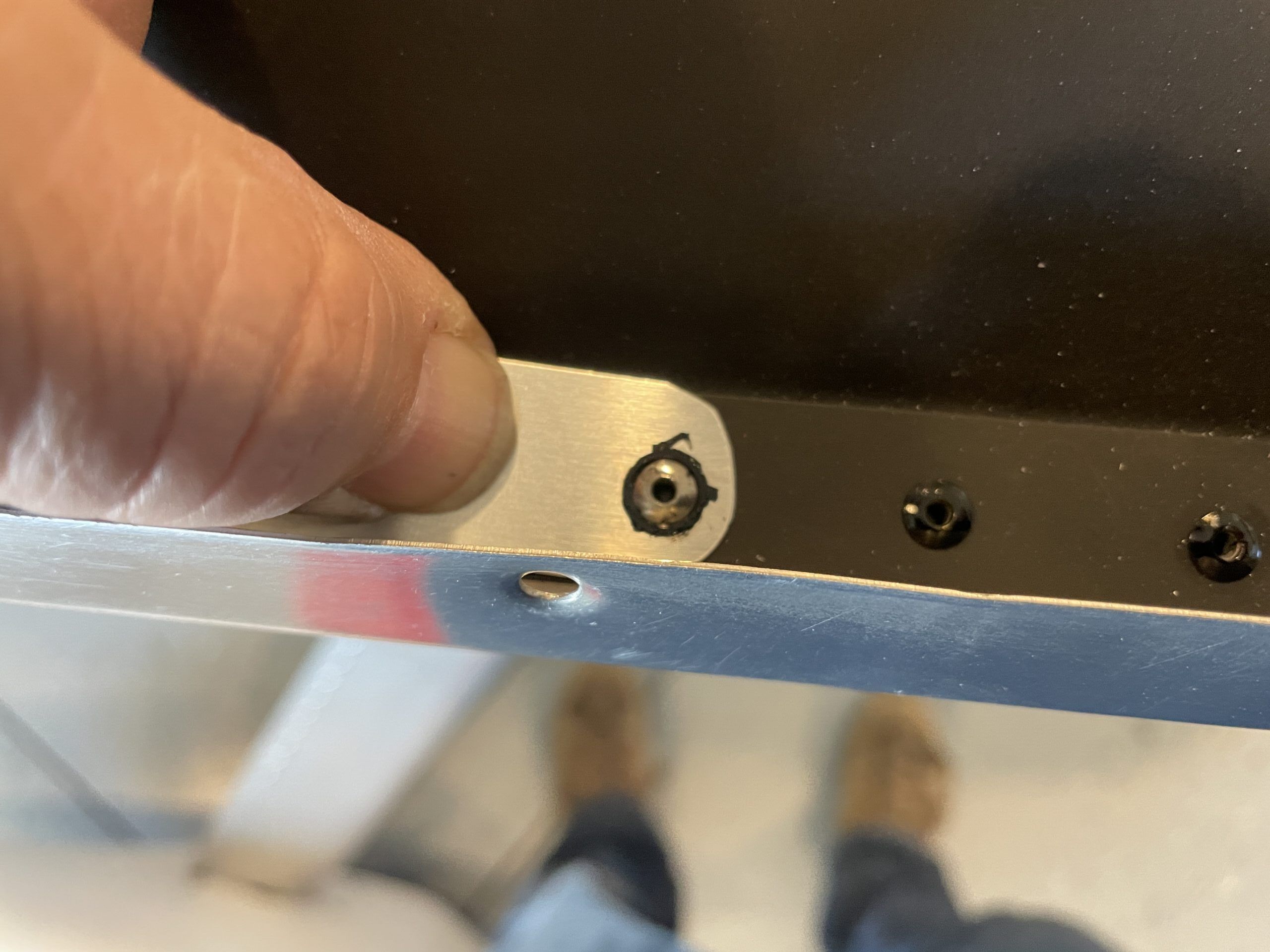
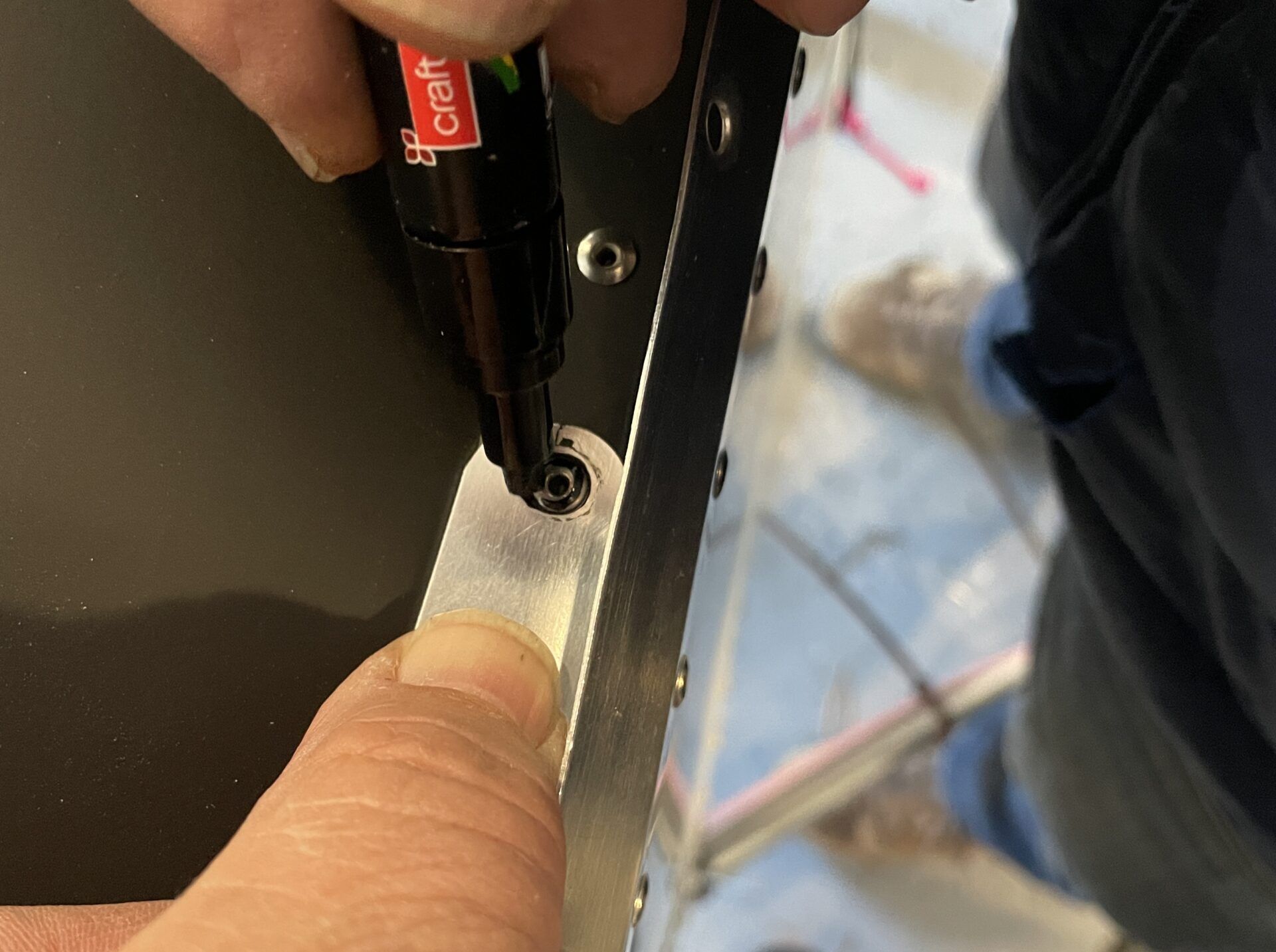
In these pictures, we had just installed the glareshield on our eXenos project with close to 100 pulled rivets. The glareshield had been painted flat black a couple of years ago and we didn’t want all those rivets reflecting off the inside of the windshield. So we whipped up a mask and painted them all black in about 10 minutes.
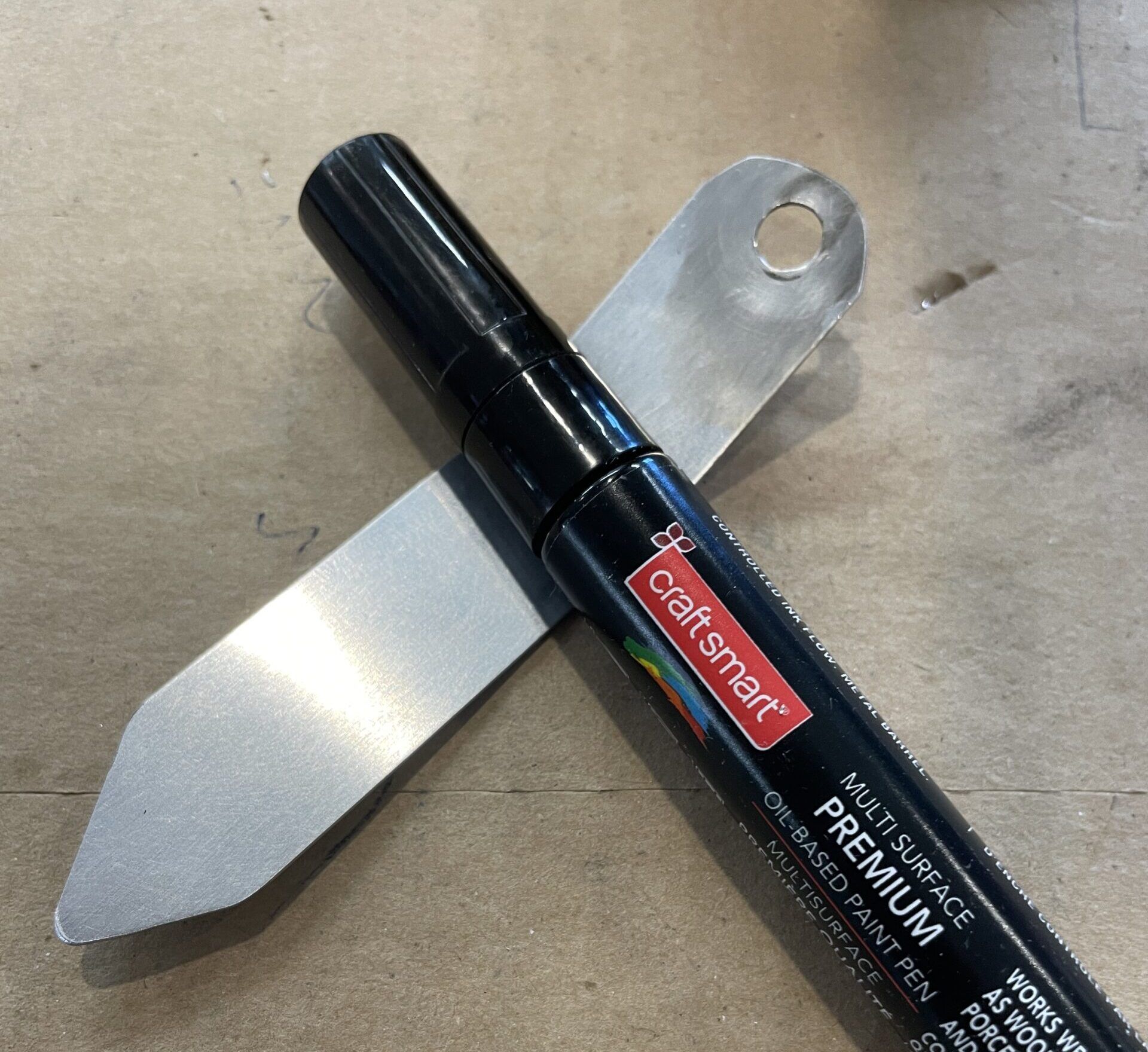
It’s coming up with simple tricks like this that make building fun and shows those looking at your airplane later that you put some time and effort into solving the thousands of little problems that come up in the building process.

